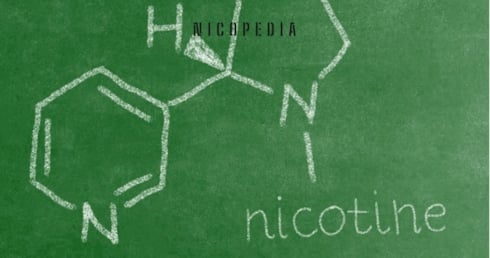Nicotine’s Reputation Problem and Why It Matters
Smoking still kills around 75,000 people a year in the UK, but nicotine itself isn’t the cause. As more people switch to smoke-free options like pouches and vapes, it’s time to separate myths from facts so smokers can make informed, healthier choices.

Key Takeaways
- Though cigarettes are deadly, it is not nicotine that causes cancer
- The main health risks come from smoke inhalation
- Misunderstanding nicotine prevents smokers from switching to less harmful alternatives
- Pouches and vapes are smoke-free options that significantly reduce toxic chemical exposure
- Public health messaging must clearly separate smoking dangers from nicotine’s addictive properties
A Changing Nicotine Landscape
“People smoke for nicotine but they die from the tar.” Michael Russel, 1976.
Cigarettes are the deadliest consumer product in history. The good news is that U.K. smoking rates have plummeted to ~11.9%, down from 45.6% in 1974 when records were first kept.
The bad news is that smoking-related diseases still kill approximately 75,000 Brits each year. Globally, this number is approximately 8 million deaths annually.
Given the number of deaths attributed to smoking-related disease, it isn’t surprising that nicotine gets a bad rap. For decades, this molecule’s public image was closely tied to cigarettes.
But it is not nicotine that causes cancer. The real harm comes from the combustion of tobacco, which sends a cocktail of thousands of chemicals (including more than 70 carcinogens) into the lungs.
That distinction didn’t matter much when cigarettes were the main nicotine delivery method. But with smoke‑free options like e‑cigarettes and nicotine pouches going mainstream, the old nicotine narrative is getting in the way of public health goals.
Less Harmful but Not Harmless
Recent reporting underscores how nicotine’s previously simple story is now more complicated. Yes, nicotine is less harmful without the smoke—but it is still addictive, and the long-term effects when consumed without tobacco aren’t yet fully understood.
Why This Debate Is Heating Up Now
The timing of the debate over nicotine isn’t coincidental. The past few years have seen a convergence of shifting consumer behavior, evolving product innovation, and increased regulatory scrutiny. Nicotine pouches have been on the market for a decade, but as articles in GQ and The New Yorker have chronicled, their popularity is surging.
This means that more people are encountering nicotine outside the traditional smoking context and forming opinions based on a combination of marketing, peer influence, and half-remembered health warnings from the cigarette era.

Image: Nic-o-cin ad from the 1930s
The copy suggests that neutralizing nicotine will let people “smoke as much as they like without worrying.” Science has shown that the better approach is to eliminate the smoke.
Misconceptions and Missed Opportunities
A majority of people still believe nicotine is the cancer-causing agent in cigarettes. This misunderstanding can discourage smokers from switching to modern alternatives that could dramatically reduce their exposure to toxic chemicals.
If smokers think nicotine in any form is dangerous, they’re less likely to use these alternatives as a way to stop smoking.
Separating Fact from Fear
Public health experts and doctors now face a tricky communication challenge: explaining what nicotine is and what it is not. As noted in a recent STAT article, separating the risks of nicotine addiction from the far greater dangers of combustible tobacco requires nuance.
Correcting misperceptions is challenging in an era of low trust in both government and industry. Healthcare providers—many of whom still believe nicotine myths—are seen as credible messengers. Training them to communicate the science could help shift public understanding.
Without better education, policies like lowering nicotine levels in cigarettes could backfire if people wrongly assume “low nicotine” means “low risk.” There is no such thing as a safe cigarette because the smoke is the problem.
Bottom Line
The science is crystal clear on one point: cigarettes are a dangerous way to consume nicotine. The smoke has cleared, but confusion persists. Misconceptions in both directions could shape the future of nicotine use.
With vapes and nicotine pouches now firmly in the cultural zeitgeist, getting the facts straight isn’t just a matter of academic debate. It’s a public health priority.
Now is the perfect time to tell the full story. It is critical to separate the dangers of combustible tobacco from the properties of nicotine itself, which will empower people to make informed choices.
